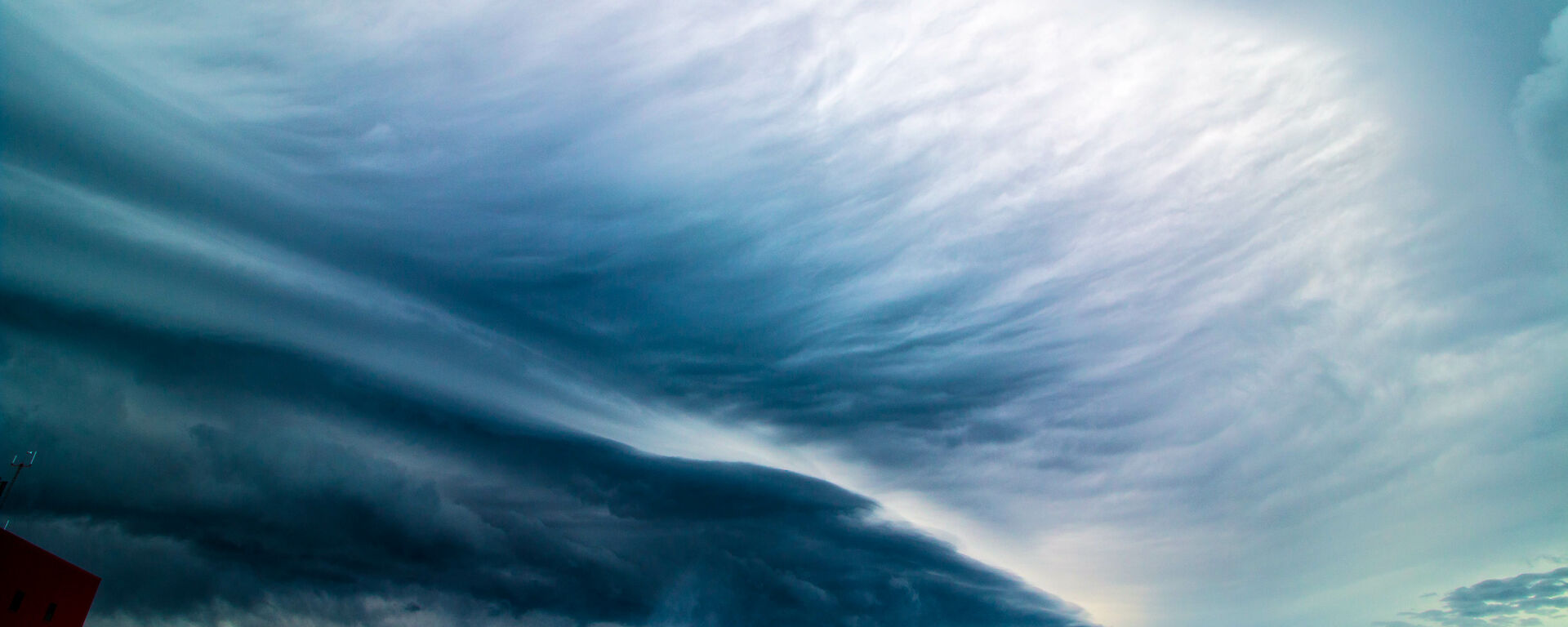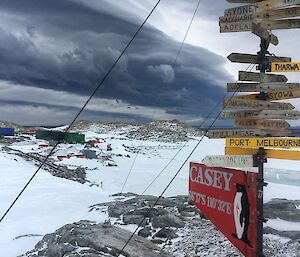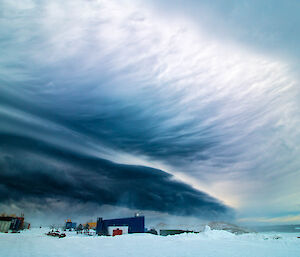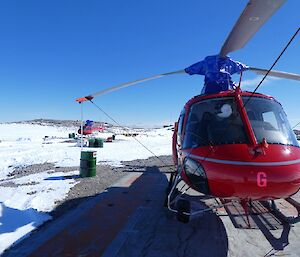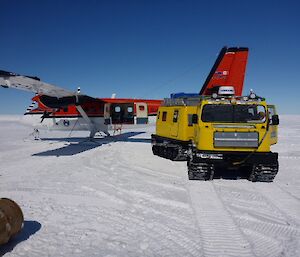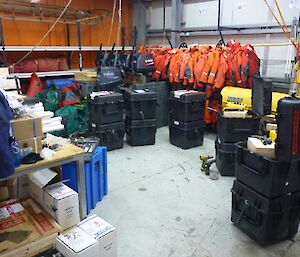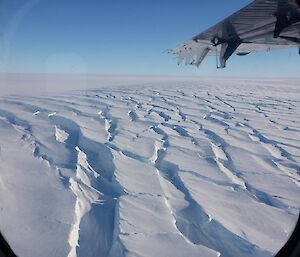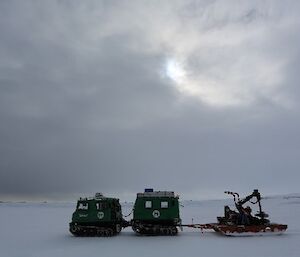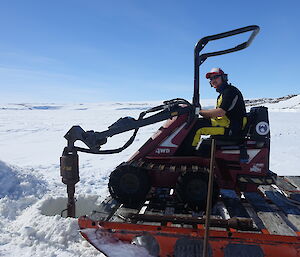The fresh faced expeditioners at Casey experienced their first blizzard of the season over the past weekend. Winds of 111 kilometres per hour blasted the station on Sunday, with the highest recorded gust of 141 kilometres per hour at 11:50am. While conditions eased on Monday, the winds remained around 80 kilometres per hour.
Temperatures sat between −4.5°C and −3.7°C over the past 24 hours, with the wind chill taking the apparent temperature as low as −23°C. The weather at Casey is characterised by frequent and sudden changes, with easterly blizzards whipping around the slopes of Law Dome before descending on station.
On Sunday, expeditioners were kept inside by the second highest level alert ‘Code Red’ and were only allowed outside with the approval of the station leader, when travelling in pairs.
The wind eased late afternoon on Sunday and with travel restrictions lifted, expeditioners headed outside where they were treated to spectacular cloud formations around the research station. While it was the first blizzard of the season for most, wintering expeditioners experienced more than double Sunday’s wind speed on 31 July with a record gust of 248 kilometres per hour recorded on the station’s automatic weather station.

